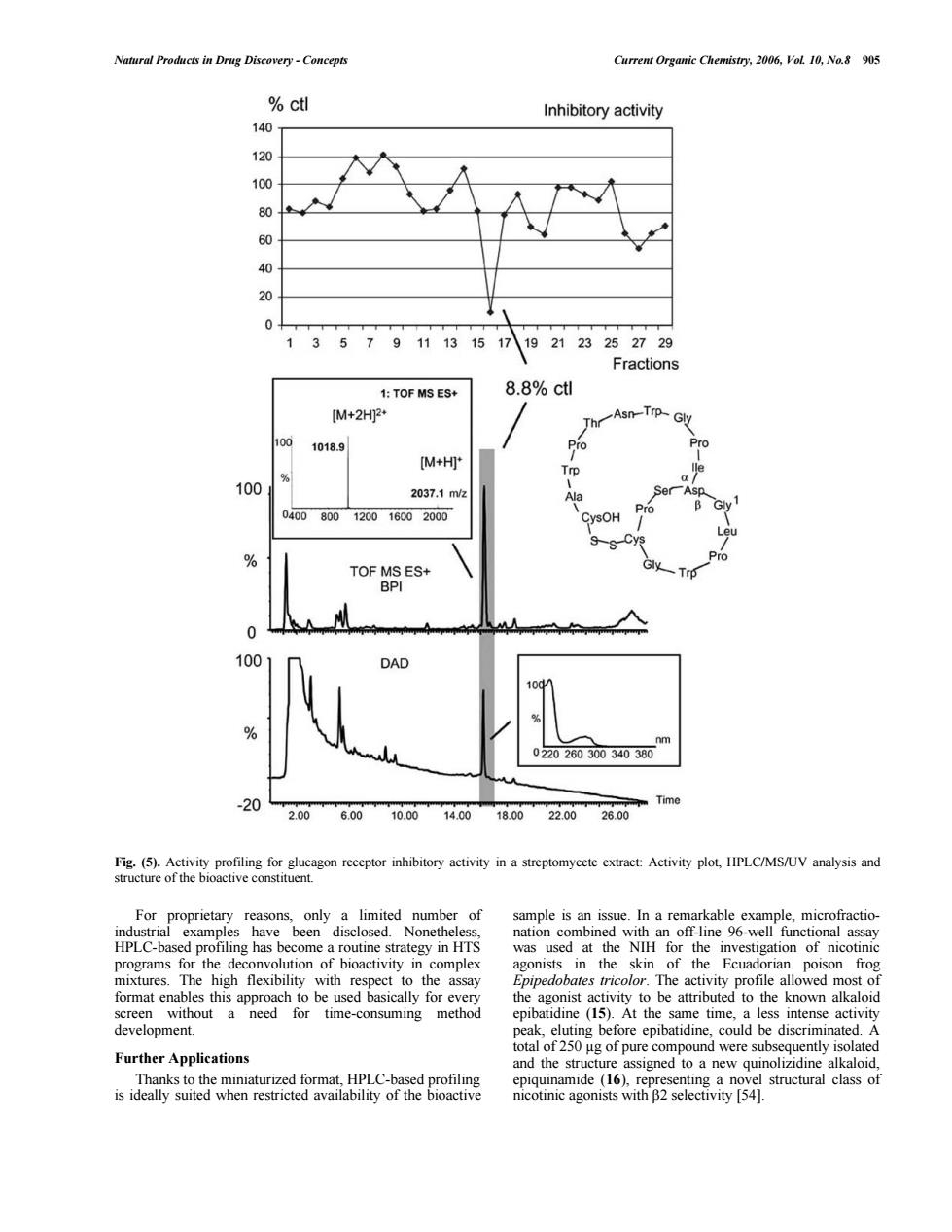正在加载图片...

Natural Products in Drug Discovery-Concept Current Organic Chemistry.2006.VoL 10,No.8 905 ctl Inhibitory activity 140 120 100 80 60 0 0 357911131517八192123252729 Fractions 1:TOF MS ES 8.8%ct M+2H2 Asn 1018.9 [M+H] 00 20371 0400800120016002000 SOH 260300340360 20 Time 2.00 6.00 10.0014.00 18022002600 te extract Activity plot HPLC/MS/UV analysis and epibatidine (15).At th vit Further applications pure com ound were sub ssigned to a new quin the miniatuNatural Products in Drug Discovery - Concepts Current Organic Chemistry, 2006, Vol. 10, No.8 905 For proprietary reasons, only a limited number of industrial examples have been disclosed. Nonetheless, HPLC-based profiling has become a routine strategy in HTS programs for the deconvolution of bioactivity in complex mixtures. The high flexibility with respect to the assay format enables this approach to be used basically for every screen without a need for time-consuming method development. Further Applications Thanks to the miniaturized format, HPLC-based profiling is ideally suited when restricted availability of the bioactive sample is an issue. In a remarkable example, microfractionation combined with an off-line 96-well functional assay was used at the NIH for the investigation of nicotinic agonists in the skin of the Ecuadorian poison frog Epipedobates tricolor. The activity profile allowed most of the agonist activity to be attributed to the known alkaloid epibatidine (15). At the same time, a less intense activity peak, eluting before epibatidine, could be discriminated. A total of 250 µg of pure compound were subsequently isolated and the structure assigned to a new quinolizidine alkaloid, epiquinamide (16), representing a novel structural class of nicotinic agonists with b2 selectivity [54]. Fig. (5). Activity profiling for glucagon receptor inhibitory activity in a streptomycete extract: Activity plot, HPLC/MS/UV analysis and structure of the bioactive constituent